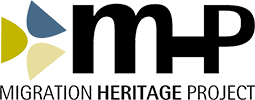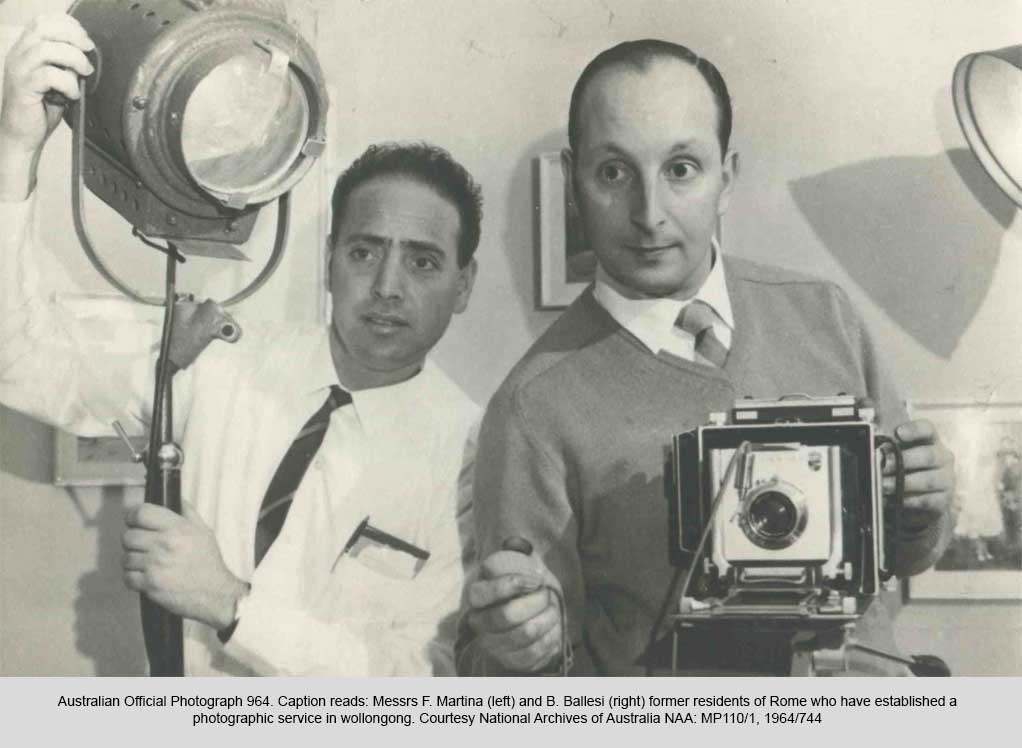
PHOTO ROMA STUDIO: MARTINA AND BALLESI
For many Italian migrants who lived in the Illawarra region post-World War 2, Photo Roma Photographic Studio would play an integral part of family milestones such as baptisms and weddings as they did with the early organisations and associations established by members of the Italian community. As a result, Photo Roma leaves behind a substantial legacy of photographs that documents the way of life as a migrant in the Illawarra from the 1950s.
Photo Roma was established by three friends: Bruno Ballesi, Ferruccio Martina and Luciano Palmini, while working full time at the steelworks, EPT and other heavy industries operating during this time. They would work out of their temporary accommodations that housed migrant men such as hostels.
Ferruccio Martina, born in Italy on 5 August 1925, was first to migrate to Australia under the Australian Italian Migration Agreement in March 1952 onboard the ship ‘Helenic Prince’. Bruno kept in touch with Ferruccio who convinced Bruno to also migrate to Australia. Bruno Ballesi was 24 years old when he came to Australia in November 1955 onboard the ship ‘Surriento’. Bruno was first employed at Port Kembla Steelworks and lived at Cringila.
Bruno was the son of Nazzareno and Anna Ballesi. Nazzareno Ballesi, a World War One veteran and later a Carabinieri, was born in Macerata in the region of Le Marche. Anna Ballesi came from a Blacksmithing family and was born in the village of Corciano in the region of Umbria. Bruno was born in Rome in March 1931, the third eldest of six children. Luciano, one of his twin, younger, brothers would later also migrate to Australia onboard the ship ‘Roma’ arriving in Sydney in November 1961 and settled in the Illawarra staying with Bruno and Liliane who at that time were living at 87 Mt Keira Road Wollongong.

Prior to coming to Australia Bruno had been working for 10 years as a photographer in Rome, a job he had started straight after he finished school when he was 15 years old. Bruno first began his training as a photographer under Salvatore Pasquini at his studio in Via Veneto in Rome. Shortly after he joined the studio of Fratelli Bettini in Via Reggio Emilia. Here he would stay until he departed for Australia in 1955. Whilst at Fratelli Bettini, Bruno learned many of the skills he would later use in Australia.
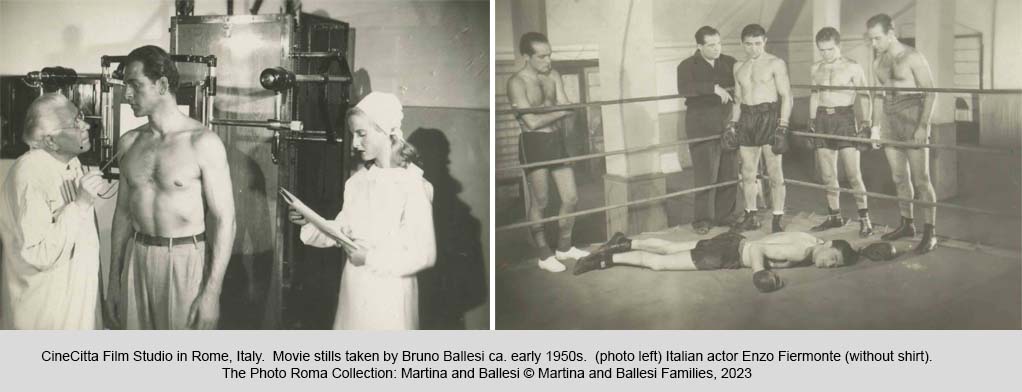
As well as all the regular photographic tasks he also worked for Bettini as part of a team of photographers based at Cinecitta film studios outside Rome, taking photo stills for movies being produced there. The team was also tasked with photographing the many thousands of post-World War 2 refugees from all over Europe who were passing through Cinecitta which had also been used as a transit camp at that time. He would later meet up with some of the people he photographed at the transit camp whilst living in Wollongong. Bruno’s older brother, Giorgio, was a photographer at Fratelli Bettini Studio for his whole career and the studio still operates in Via Reggio Emilia to this day.
Sometime around 1956/57 Ferruccio and Bruno left their respective accommodations in Unanderra Hostel and Cringila and took rooms in the back of a house owned by a Mrs Kirk on upper Crown Street in Wollongong. It was here in Mrs Kirk’s Garage that they first set up a dark room to process and print the photos they were taking on weekends whilst still employed at the steelworks. The darkroom became, at times, a social meeting place for many of their friends including a local priest from the Italian centre, Father Aldo, who would come to chat while they were printing photographs. Liliane Ballesi would later recall how a typical date for her and Bruno would involve him picking her up from the farm in the car that he and Ferruccio jointly owned and taking her to dinner at the original Italian centre. Afterwards they would return to Mrs Kirks where she would watch him develop photos, often with other Italian friends joining them in the darkroom. This would usually continue until late at night after which Bruno would drive Liliane home to the farm in Wongawilli.

It was in 1957 that Bruno met Liliane Fontaine and they were married in 1959. After they were married they lived with Ferruccio at the home of Mrs Kirk but soon after all three moved to a larger half house on Cliff Road, Wollongong, which was owned by a French friend and local builder, Bernard Armessen. It was here in July 1959 that Bruno and Liliane’s first child Christine was born. At the Cliff Road house a section of Ferruccio’s bedroom was partitioned off to create a new darkroom. They then ran their photography business from the Cliff Road residence. Their photography business grew, particularly after being asked to photograph weddings in the Italian community which enabled Bruno and Ferruccio to leave their full-time employment and concentrate on their photography business.

Later, in 1959, Bruno and Ferruccio established their first studio in an apartment above a shop in Crown Street Wollongong and were able to set up a dark room where the three men started their small photography business. Luciano was still working full time at this point and would leave the photography business shortly after.
This first rented studio for their business was an Art Deco apartment above a shop at 135 Crown Street Wollongong that faced Crown Street, but the entrance was a stairwell accessed from Pig Alley. Bruno and Ferruccio were able to set up not only a dark room, but also a studio and office and expanded their business to include passport photographs, portraits and other more formal occasions. They processed their prints using the bathtub to wash them. Of course, at this time, all photographs were in black and white as colour did not become available until the late 1960s. There were no such thing as digital photographs then and so the method of processing photographs were commensurate of the technology of the 1950s.
By 1961 Ferruccio had also married. He and his wife, Cesira, together with Bruno and Liliane, purchased a home at 87 Mt Keira Road still operating their photographic business and working out of their studio on Crown Street. As well as running their photographic business they would often help out in the community taking photographs of community picnics or festivals and family occasions. Their photography business kept growing and they were becoming even more busy. Both Liliane and Cesira would work in the businesses performing the administration work. They would also help out with processing of the photos either working at home or in the studio.
In 1966 Bruno and Ferruccio opened a second studio in the Lake Market Chambers on King Street in Warrawong. Bruno ran the Warrawong studio and Ferrucio Wollongong. They expanded their business again with video using a Super 8 camera. They would quite often work weddings together with Bruno taking photographs and Ferruccio doing the video. When they had to work weddings separately they would hire other staff to assist. Because of the demand for their services at weddings they introduced another product to their business – wedding invitations – with the printing of the invitations done by Mr Parkes.
Photo Roma was also hired to do industrial photographs for EPT and Transfield. EPT was an Italian company initially contracted to work on the electrical transmission lines in NSW and Transfield was established by two former EPT managers who had branched out on their own after finishing with EPT. Expansion of photographic services continued and would include copying of photographs, restoring old photographs, printing photographs from old negatives and replacing lost or damaged photographs owned by former customers. Much of the skills needed for these introduced services were learnt by Bruno when he was working in this field in Italy prior to his migrating to Australia.
Ferruccio Martina was known for his singing and would often sing with the Sacred Heart Church Choir in Wollongong and at the regular Sunday night dance at the Italian Centre that was run by the Scalabrini Brothers. Ferruccio also sang with the bands from Gavino’s and Don Camillo’s restaurants. The usual custom at Italian weddings was for the photographer to be offered a meal. Quite often Ferruccio’s meal would go cold as he would not only be taking photographs, but often asked to sing at the wedding reception as well.
By 1977 both studios were doing well when the Ballesi family purchased a chicken shop at Warilla Grove, 15 minutes drive from the Warrawong studio. The chicken shop was a joint business venture between the Pallone and Ballesi families who had become acquainted with each other over the years. Eddie Pallone had a barber shop in Warrawong. Liliane and Linda Pallone ran the chicken shop, with Mark and Christine Ballesi helping in the chicken shop 3 days a week which included the weekend. About two years later they sold the chicken shop.
On 27 October 1979, Ferruccio Martina passed away very unexpectedly, he was only 54 years old. Bruno had lost his best friend who he described as being like a brother to him.
This left only Bruno to run the two Photo Roma Studios, the studio in Wollongong that had been managed by Ferruccio until his death and the Warrawong studio that was managed by Bruno. The Warrawong studio was getting much busier and Bruno would float between the two studios with the help of his son Mark. However, within a year Bruno closed the Wollongong studio and just ran the Photo Roma Studio in Warrawong. With an increase in the migrant population from Spain and Portugal in Warrawong, Photo Roma Studio were also photographing many Spanish and Portuguese events such as weddings.
In 1985 the shopping complex where the Photo Roma Warrawong studio was located had been taken over, so it was decided to move the studio to 256 Cowper Street Warrawong which was across the road. The new location provided a much larger space.

The introduction of new technology in the photographic industry brought about much change which Bruno incorporated into his business but he still maintained the dark room to enable him to continue using the old processing method when he was asked to reproduce old photographs from older mediums.
After working for 15 years without his friend and partner, Ferruccio, Bruno decided to retire in 1994 and tried to sell his business. This proved quite difficult and he only managed to sell off some of his equipment to locals.
Throughout all his working life as a photographer Bruno did community work for Italian organisations and clubs free of charge. He was a founding member of the first Marco Polo Nursing Home in Unanderra. Through his work as a photographer and service to the community he was well-known among the Italians in the Illawarra.
Bruno Ballesi passed away on 17 August 2018. He was 87 years old and left behind his wife Liliane and his children Mark and Christine, his grandchildren and great grandchildren.
Bruno Ballesi had kept every single negative, beginning with the first photo from the late 1950s until he retired which are now in the capable hands of his family who are very much aware of their importance and significance to the migrant heritage in the Illawarra.
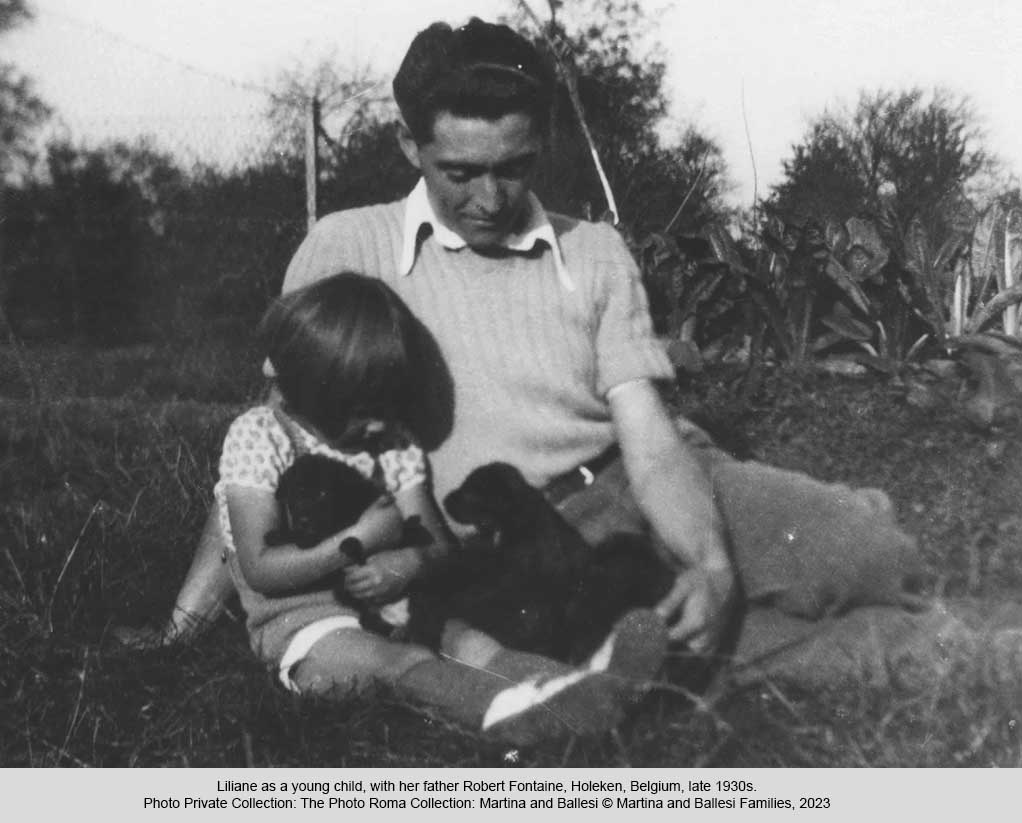
LILIANE FONTAINE
Liliane migrated to Australia three years before her future husband, Bruno Ballesi, who she would go on to meet in 1957 at a picnic at Seven Mile Beach and marry in 1959 at the Immaculate Conception Catholic Church in Unanderra. Throughout their married life Liliane would help Bruno with his photographic business, Photo Roma Studio, as well as raise their two children Mark and Christine.
Liliane Fontaine was born in Belgium in April 1937, the daughter of Robert Fontaine and Frieda Younger. Robert Fontaine was born in Dinant, Belgium, on 4 November 1906 and her mother, Frieda Younger, had been born in Germany. Liliane Fontaine’s parents separated during World War 2 and she was raised by her father Robert and his third wife, Madeleine. Madeleine Fontaine (nee Peeraerts) who was born in St Gilles, Belgium, on 25 June 1909.
In 1945, soon after the war ended, Robert and his family moved to Nice, France. Robert remained in Nice until he left for Australia some seven years later. Robert Fontaine’s uncle, Charles Fontaine, was a well-known opera singer in Europe, England and America. Robert’s mother’s family, the Friedrich family, originally owned breweries in Germany and went on to own Hotels in Ostend in Belgium and in Nice, France.
In France, Robert worked as a painter and handyman and Madeleine and Liliane as seamstresses. As they were not French citizens nor did they have French residency, they had to leave France and so they made applications to migrate to Canada, Australia and Brazil. The first response to their applications was from Australia and that is how they ended up coming to Australia and settling in the Illawarra.
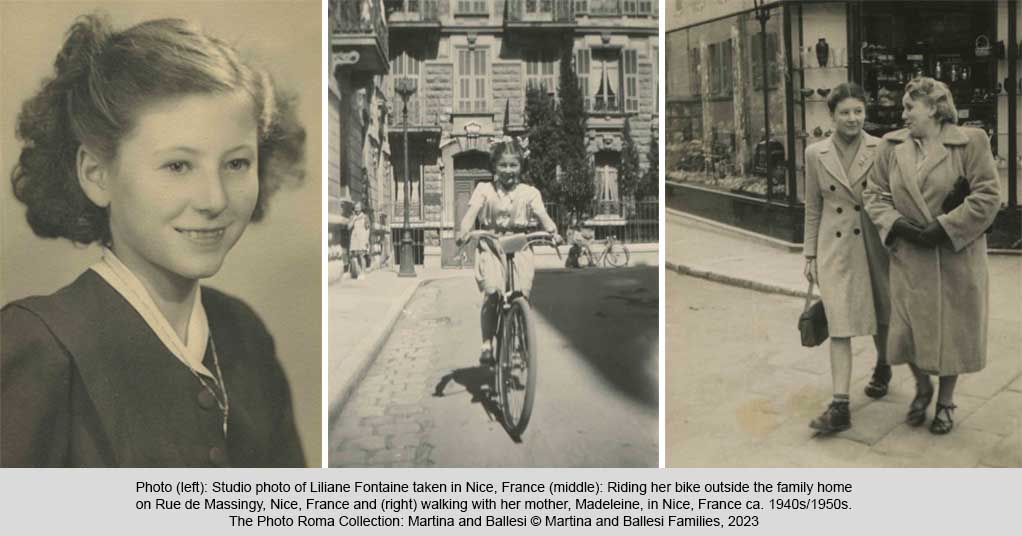
Robert was the first to emigrate to Australia in March 1952 onboard the SS Ravello. He teamed up with a small group of fellow French speaking immigrants on the ship including a younger Frenchman named Michel Grivas. Michel Grivas and Robert Fontaine lived and worked together after they settled in Wollongong. They first lived in a boarding house in Thirroul. In 1953 Madeleine and Liliane left France and arrived in Australia joining Robert Fontaine, who had moved out of the boarding house in Thirroul and rented rooms for them all on the Main Road, Bulli, which was in an old pub/hotel that had been purchased by a fellow resident of the Thirroul boarding house, Frank Russel, an immigrant from Germany. This building was demolished in about 2013. Robert, Madeleine and Liliane would also live in rented accommodation in Woonona until Robert purchased land at 451 Wongawilli Road, Wongawilli and established the Fontaine Family Farm in about 1956/57 where they ran a few cattle, pigs, farmyard fowls and grew vegetables. They also ran a boarding house at the Wongawilli farm for newly arrived migrants. This is where Liliane lived with her parents until her marriage to Bruno Ballesi.

